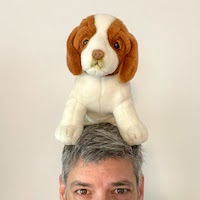My 2017 in reading
It’s been a while since I’ve done one of these posts — three years, to be exact — but I had a few goals going into this year that I wanted to look back on.
Goals
I aimed to read at least 26 works of fiction and 26 works of non-fiction this year; it’s a good bit under my past goals, but given my secondary goal I wanted to avoid stressing about quantity.
That secondary goal was to read more from underrepresented authors this year — to seek out viewpoints that were new to me. It’s really easy to read only within the corpus of cisgender, heterosexual, white men, and like a lot of other people I wanted to break out of that bubble a little more in 2017.
Results
I easily beat the quantity goal this year, hitting 52 books read sometime around July (though it took me a little longer to get to 26 non-fiction works)

More interestingly, though: I did OK on my secondary goal. Overall, 27% of the works I read were by authors of color, 51% by women or non-binary authors, and 20% by authors who are publicly LGBT+ — all told, 70% of my reading was authored by members of underrepresented minorities.
When you break it down by fiction and non-fiction, it’s clear that fiction was the greater contributor: 21% vs 7% for authors of color, 40% vs 11% for women/non-binary authors, and 16% vs 3% for LGBT+ authors. 53% of my fiction reading came from underrepresented authors, but only 16% of my non-fiction reading did. I’m hoping to change that next year, to be sure.
Genres
Generally, I don’t do a systematic genre classification for what I read, so the numbers here are a little dodgy (poetry in fiction, for instance?). Here’s the overview, though, for my fiction reading: 46% of it was some flavor of fantasy, 25% of it was sci-fi, 9.2% was some form of comic (graphic novel, manga, etc.), 6.2% counted as a thriller, 4.6% was horror, another 4.6% was literary fiction, 3.1% was mystery, and a mere 1.5% was poetry.
On the non-fiction side, 29% of my reading was in psychology, 16% in art, 16% were memoirs or biographies, 6.5% in each of technology, history, business, sport, and (non-psychology) science, and 3% in each of finance and philosophy.
I think I’d like to vary my genres a little more widely next year on the fiction side — maybe throw in some romance, explore some more mysteries, that sort of thing. On the non-fiction side, I think I’ll work on expanding philosophy and science as I dig in more deeply on my interest in expertise.
Favorites
I read some excellent books this year. Some of my absolute favorites were:
- Angie Thomas’s The Hate U Give —most reviews of this include that it was inspired by Black Lives Matter, and that’s true, but there’s more to it than that. It’s a fantastic YA novel, and it richly deserves all the awards it’s winning.
- Michael Lewis’s The Undoing Project — Lewis is a great non-fiction writer, able to make statistics and finance into page-turning bestsellers, and with the partnership between Kahneman and Tversky he’s got a fascinating source of material.
- Sarah Rees Brennan’s In Other Lands — I cannot say enough good things about this rethinking of portal fantasies. The characters are real, the relationships are real, and the world built is stunning. It’s also probably the most quotable book I read this year.
- Ken Liu’s The Paper Menagerie and Other Stories — I don’t read a lot of short story anthologies; I’m glad that this was one of them. I was blown away by the range (science fiction, historical fiction, fantasy, even something close to magical realism) Liu showed here, and it’s made me a fan of his for life.
- Nnedi Okorafor’s Binti: Home — the first novella in this series was one of my favorites in 2016, and I’m guessing that the third will be one of my favorites when it comes out in January. Okorafor has a gift for making the alien seem familiar, and I’ve loved everything of hers I’ve read.
All in all, it was a great year for reading, and I’m looking forward to more of the same in 2018!
